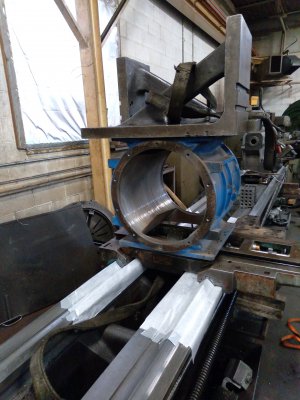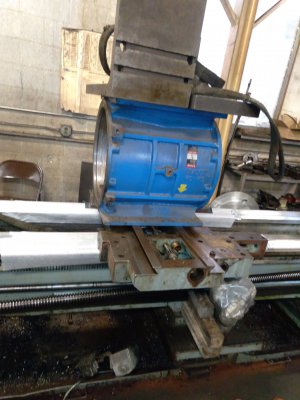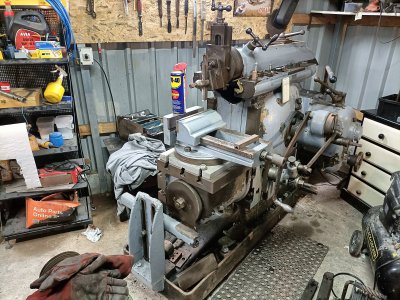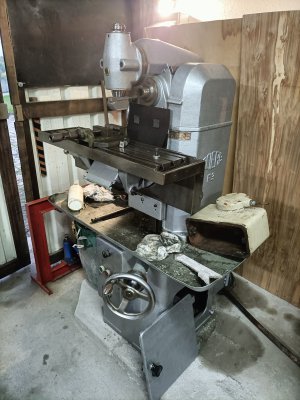- Joined
- Oct 7, 2020
- Messages
- 73
Right that's what been eating my brain, how would almost 5mm wear on a machine like thisI think that the “height” of the tool may be misleading. One could certainly imagine a lathe with a non-horizontal cross slide. Let’s say it moves upward along a 10° incline as it approaches the spindle axis. So the tool height would change relative to the (horizontal) carriage ways, but as long as the tool starts in the right place, it will move along a diameter of the workpiece. To set the tool height, one would be measuring from the inclined cross ways, not the horizontal carriage ways.
Such a configuration is perhaps more complicated in some aspects for setup, but should be no different in operation.
It does seem like something is off, as wear alone cannot account for the discrepancy you have noted.
Ohh I see OK that makes sense... I was picturing in my mind the crosslide going forward but also upwards, but it makes sense that it always traces a straight line tru the center!I was thinking about that too.
In engineering one of the ways I test a theory is to take it to extremes. If it holds true at the extremes them it likely is true at the small scale that is hard to see.
So in this case if the cross slide were at a 45° angle the height of the tool tip above the bed ways would obviously change as the cross slide is moved. Even though the 45° inclined cross slide would function just fine. What is important is that the tool tip follow a straight line that goes thru the center of the spindle. The angle of that line is irrelevant, just like the lathe being level is irrelevant, In theory it would work just as well bolted to the wall. What is important is the the mounting of the lathe does not impart any twist in the bed.
So after more thought, What is important is that the cross slide moves in a straight line that is 90° to the Center Line of the spindle. As long as the cross slide is moving in a straight line it does not matter what angle it is at. Once you adjust the tool height to spindle center line the tool will always hit the diameter of the part it its tangent point, which is what you want.
As far as the dial markings being way off, are you sure the lathe is calibrated in mm and not in inches? Are you taking up all the backlash before you measurement? Some lathes will move the tool tip 1mm per mark which means that it will remove 2mm from the dia. Some lathes are the opposite where the graduations on the dial are for how much is being removed from the diameter of the part. There is usually something real near the dial to tell you what the calibration is, If not then you need to measure it to verify what you have.
The dial yeah I'm pretty sure thats in mm because is never misses by a lot, just enough to be as annoying error, and also 1mm in the dial is 1mm off the workpiece.
With the wear thing accounted for what should I do to correct the bad surface finish and the taper its cutting?
It's cutting about 0.03mm taper in about 100mm




